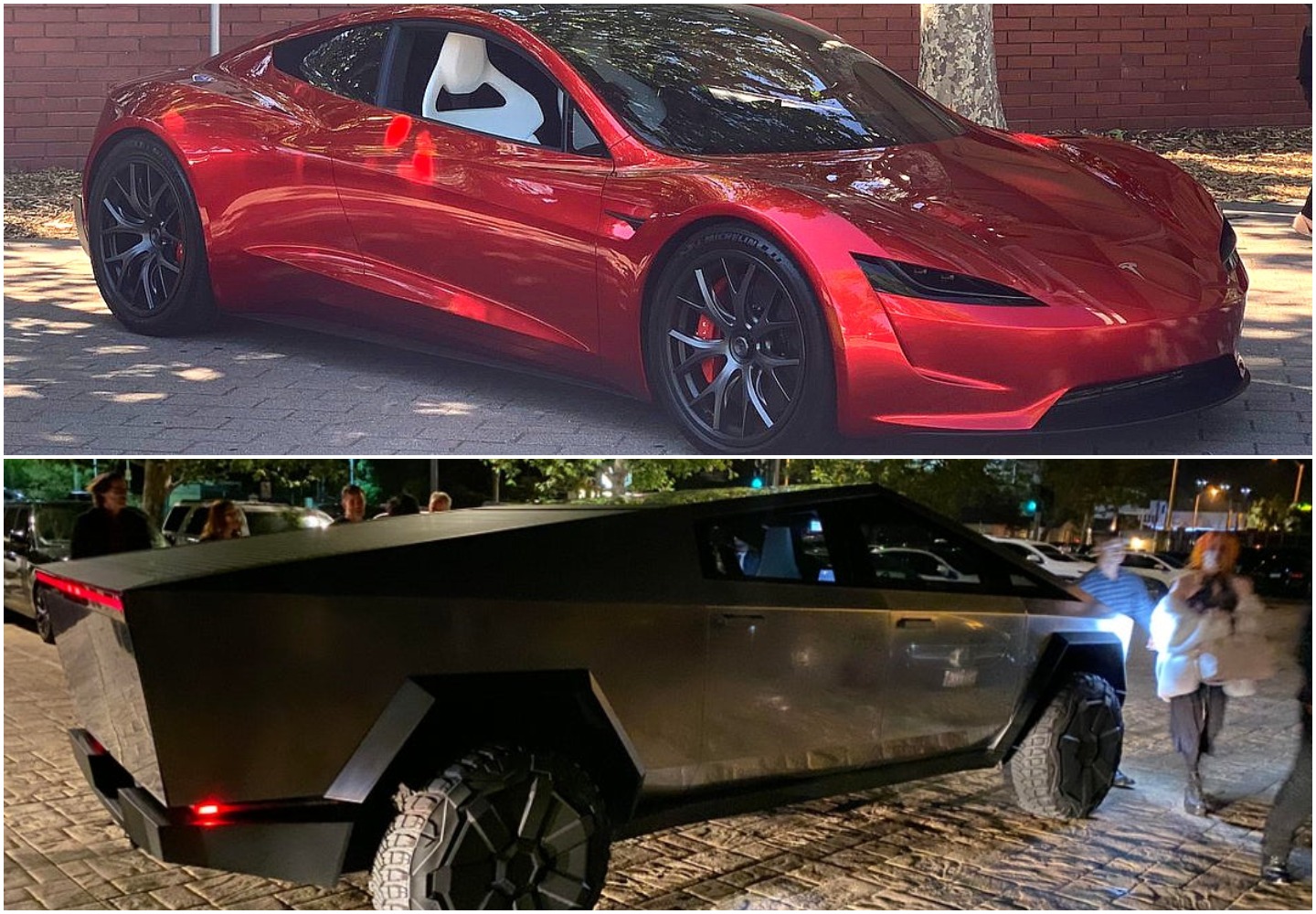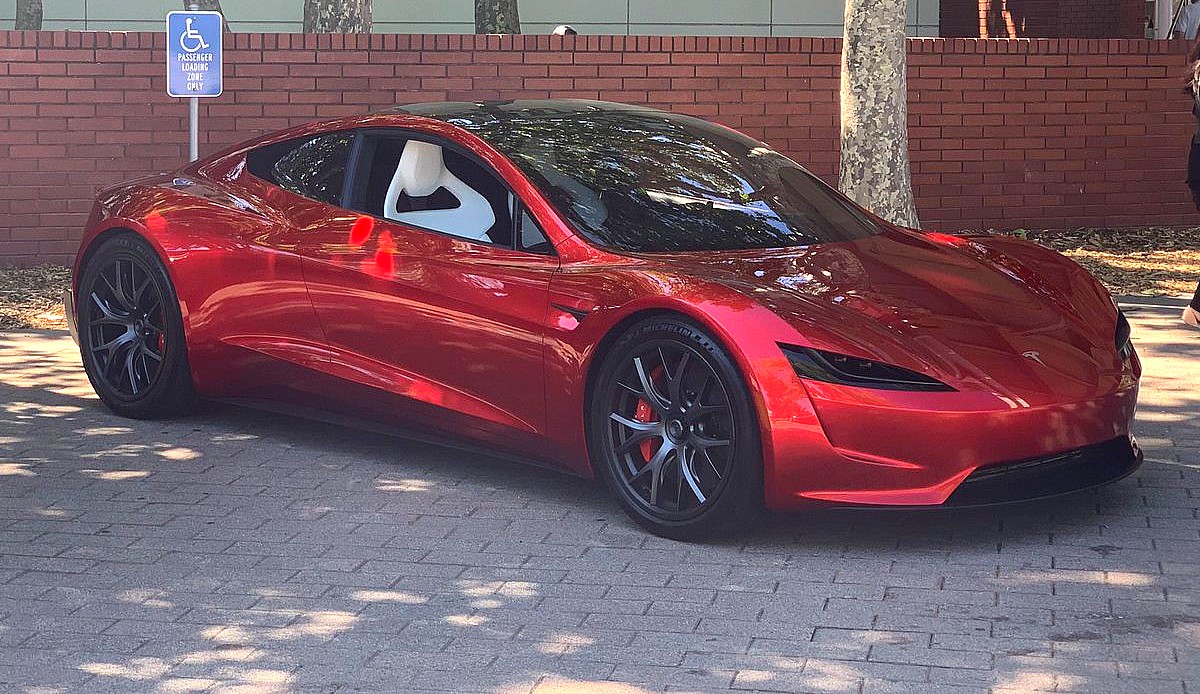

News
Tesla’s no-side-mirror approach becomes feasible as NHTSA ponders camera-based systems
When Tesla unveiled the next-generation Roadster and the Cybertruck to the world, the two vehicles immediately shocked the automotive industry. The Roadster stunned because of its insane specs, and the Cybertruck shocked because of its unorthodox design that is unlike any other pickup truck on the market. However, the two vehicles also share something very unique: they both lack side mirrors.
Federal Motor Vehicle Safety Standard No. 111, titled “Rear Visibility,” requires all vehicles to “be equipped with rearview mirrors to provide drivers with a view of objects that are to their side or their side and rear.” However, the NHTSA recently hinted that “light vehicles and heavy trucks” may eventually be equipped with camera systems instead of traditional side mirrors.
An edition of the United States government’s Federal Register from late 2019 shows the National Highway Transportation Safety Administration sought more information on the possibility of vehicles utilizing a “Camera Monitor System,” or CMS. The removal of mirrors instead of camera systems would eliminate the need for traditional side mirrors and possibly rearview mirrors, too.

Tesla’s absence of side mirrors started back in 2013 with the unveiling of the Model X. After wrestling with the idea of a side-mirrorless SUV to increase aerodynamic performance, CEO Elon Musk stated that manufacturers were required to install side mirrors on vehicles. A side mirror-less design actually benefits electric cars like Teslas, since side mirrors increase drag, reducing range. This was done by Audi with the e-tron, with the vehicle being offered with a side mirror-less trim that is slightly more efficient.
The Cybertruck’s side mirrors were absent during its unveiling event in November 2019. Instead of regular mirrors, Tesla had equipped the vehicle with Autopilot cameras that are in the truck’s front fender. Many enthusiasts of the electric carmaker speculated that this was a design that wouldn’t enter production as regulations still existed that required side mirrors.
To determine the effectiveness of camera systems instead of traditional mirrors, the NHTSA conducted its research and testing. The organization also examined testing performed by other parties. The CMS noted that during a trial period from 2006 to 2011, NHTSA research showed that several safety concerns arose from the use of cameras instead of mirrors. These stemmed from glares when sunlight touched the cameras. However, the German Federal Highway Research Institute published a separate study that showed the CMS meets “specific quality criteria” and can provide “sufficient” rear visibility for drivers.

So the question is: What has changed in the nine years since the study concluded? For one, cameras have gotten significantly better. What was once a quality piece of photography equipment can be found on the back of an iPhone. High-resolution pictures and videos are not uncommon, and it is not rare for even extremely affordable cameras to provide better quality images than what was available in 2011.
To determine an accurate and fair assessment of the CMS, a new study should be performed using the 2020 technology. The use of rearview backup cameras is a standard feature on most vehicles today. While such systems are used mostly when backing into a parking spot, it is still relevant, and it shows that the widely adopted technology can be used in an effective and safe manner. This feature could be expanded on, and mirrors could be removed from vehicles if the proper research was performed and quality cameras were placed on a vehicle’s exterior.
Tesla has hinted at mirrorless driving in the past, and the door is open now more than ever. It seems this system could be integrated into performance vehicles like the Roadster, or pickups like the Cybertruck in the future. The designs of these two all-electric vehicles have hinted towards a future that does not include traditional side mirrors, which could change the way other carmakers design vehicles as a whole. Tesla’s minimalistic interior and large centrally-located dash screen has been adopted by many other carmakers, showing the electric car company influences other automakers in the industry. A side-mirror-less theme may be the next big trend that Tesla starts.

Elon Musk
Starlink passes 9 million active customers just weeks after hitting 8 million
The milestone highlights the accelerating growth of Starlink, which has now been adding over 20,000 new users per day.

SpaceX’s Starlink satellite internet service has continued its rapid global expansion, surpassing 9 million active customers just weeks after crossing the 8 million mark.
The milestone highlights the accelerating growth of Starlink, which has now been adding over 20,000 new users per day.
9 million customers
In a post on X, SpaceX stated that Starlink now serves over 9 million active users across 155 countries, territories, and markets. The company reached 8 million customers in early November, meaning it added roughly 1 million subscribers in under seven weeks, or about 21,275 new users on average per day.
“Starlink is connecting more than 9M active customers with high-speed internet across 155 countries, territories, and many other markets,” Starlink wrote in a post on its official X account. SpaceX President Gwynne Shotwell also celebrated the milestone on X. “A huge thank you to all of our customers and congrats to the Starlink team for such an incredible product,” she wrote.
That growth rate reflects both rising demand for broadband in underserved regions and Starlink’s expanding satellite constellation, which now includes more than 9,000 low-Earth-orbit satellites designed to deliver high-speed, low-latency internet worldwide.
Starlink’s momentum
Starlink’s momentum has been building up. SpaceX reported 4.6 million Starlink customers in December 2024, followed by 7 million by August 2025, and 8 million customers in November. Independent data also suggests Starlink usage is rising sharply, with Cloudflare reporting that global web traffic from Starlink users more than doubled in 2025, as noted in an Insider report.
Starlink’s momentum is increasingly tied to SpaceX’s broader financial outlook. Elon Musk has said the satellite network is “by far” the company’s largest revenue driver, and reports suggest SpaceX may be positioning itself for an initial public offering as soon as next year, with valuations estimated as high as $1.5 trillion. Musk has also suggested in the past that Starlink could have its own IPO in the future.
News
NVIDIA Director of Robotics: Tesla FSD v14 is the first AI to pass the “Physical Turing Test”
After testing FSD v14, Fan stated that his experience with FSD felt magical at first, but it soon started to feel like a routine.

NVIDIA Director of Robotics Jim Fan has praised Tesla’s Full Self-Driving (Supervised) v14 as the first AI to pass what he described as a “Physical Turing Test.”
After testing FSD v14, Fan stated that his experience with FSD felt magical at first, but it soon started to feel like a routine. And just like smartphones today, removing it now would “actively hurt.”
Jim Fan’s hands-on FSD v14 impressions
Fan, a leading researcher in embodied AI who is currently solving Physical AI at NVIDIA and spearheading the company’s Project GR00T initiative, noted that he actually was late to the Tesla game. He was, however, one of the first to try out FSD v14.
“I was very late to own a Tesla but among the earliest to try out FSD v14. It’s perhaps the first time I experience an AI that passes the Physical Turing Test: after a long day at work, you press a button, lay back, and couldn’t tell if a neural net or a human drove you home,” Fan wrote in a post on X.
Fan added: “Despite knowing exactly how robot learning works, I still find it magical watching the steering wheel turn by itself. First it feels surreal, next it becomes routine. Then, like the smartphone, taking it away actively hurts. This is how humanity gets rewired and glued to god-like technologies.”
The Physical Turing Test
The original Turing Test was conceived by Alan Turing in 1950, and it was aimed at determining if a machine could exhibit behavior that is equivalent to or indistinguishable from a human. By focusing on text-based conversations, the original Turing Test set a high bar for natural language processing and machine learning.
This test has been passed by today’s large language models. However, the capability to converse in a humanlike manner is a completely different challenge from performing real-world problem-solving or physical interactions. Thus, Fan introduced the Physical Turing Test, which challenges AI systems to demonstrate intelligence through physical actions.
Based on Fan’s comments, Tesla has demonstrated these intelligent physical actions with FSD v14. Elon Musk agreed with the NVIDIA executive, stating in a post on X that with FSD v14, “you can sense the sentience maturing.” Musk also praised Tesla AI, calling it the best “real-world AI” today.
News
Tesla AI team burns the Christmas midnight oil by releasing FSD v14.2.2.1
The update was released just a day after FSD v14.2.2 started rolling out to customers.

Tesla is burning the midnight oil this Christmas, with the Tesla AI team quietly rolling out Full Self-Driving (Supervised) v14.2.2.1 just a day after FSD v14.2.2 started rolling out to customers.
Tesla owner shares insights on FSD v14.2.2.1
Longtime Tesla owner and FSD tester @BLKMDL3 shared some insights following several drives with FSD v14.2.2.1 in rainy Los Angeles conditions with standing water and faded lane lines. He reported zero steering hesitation or stutter, confident lane changes, and maneuvers executed with precision that evoked the performance of Tesla’s driverless Robotaxis in Austin.
Parking performance impressed, with most spots nailed perfectly, including tight, sharp turns, in single attempts without shaky steering. One minor offset happened only due to another vehicle that was parked over the line, which FSD accommodated by a few extra inches. In rain that typically erases road markings, FSD visualized lanes and turn lines better than humans, positioning itself flawlessly when entering new streets as well.
“Took it up a dark, wet, and twisty canyon road up and down the hill tonight and it went very well as to be expected. Stayed centered in the lane, kept speed well and gives a confidence inspiring steering feel where it handles these curvy roads better than the majority of human drivers,” the Tesla owner wrote in a post on X.
Tesla’s FSD v14.2.2 update
Just a day before FSD v14.2.2.1’s release, Tesla rolled out FSD v14.2.2, which was focused on smoother real-world performance, better obstacle awareness, and precise end-of-trip routing. According to the update’s release notes, FSD v14.2.2 upgrades the vision encoder neural network with higher resolution features, enhancing detection of emergency vehicles, road obstacles, and human gestures.
New Arrival Options also allowed users to select preferred drop-off styles, such as Parking Lot, Street, Driveway, Parking Garage, or Curbside, with the navigation pin automatically adjusting to the ideal spot. Other refinements include pulling over for emergency vehicles, real-time vision-based detours for blocked roads, improved gate and debris handling, and Speed Profiles for customized driving styles.








